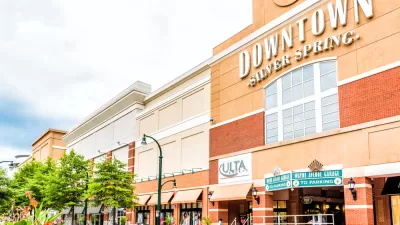The Los Angeles Times editorial board has strong words for the Los Angeles City Council about planning for transit oriented development.

An editorial from the Los Angeles Times calls the Los Angeles City Council to task as it considers a new plan for neighborhoods around the Expo Light Rail Line.
The City Council will soon vote on the Expo Line Transit Neighborhood Plan, which is the first in a series of “transit neighborhood plans” that rewrite the rules for development in communities directly around rail stations to allow more homes, offices and shops. The plan has sparked opposition among neighborhood groups worried that denser development will worsen traffic and erode community character, so the vote will be a test of the City Council’s commitment to addressing the housing shortage. It’s also an opportunity to show Sacramento that “local control” isn’t code for “no development.”
The editorial places the debate about the Expo Line Transit Neighborhood Plan in context of the failed state legislation, SB 827, which the Los Angeles City Council voted to oppose out of concern over maintaining local control.
In the process of defending the Expo Line Transit Neighborhood Plan from its opponents, the Los Angeles Times editorial board also gives a succinct argument in favor of robust transit oriented development:
Taller, denser, more walkable and more affordable development around transit stations represents the best way to solve two of L.A.’s worst problems — the staggering cost of housing and the crushing toll of traffic. Concentrating new development near rail and bus lines can help reduce Angelenos’ reliance on cars, ease traffic congestion and cut vehicle emissions that are polluting the air and fueling global climate change.
FULL STORY: It's time for L.A. to put up or shut up about building denser housing around transit

Alabama: Trump Terminates Settlements for Black Communities Harmed By Raw Sewage
Trump deemed the landmark civil rights agreement “illegal DEI and environmental justice policy.”

Study: Maui’s Plan to Convert Vacation Rentals to Long-Term Housing Could Cause Nearly $1 Billion Economic Loss
The plan would reduce visitor accommodation by 25% resulting in 1,900 jobs lost.

Why Should We Subsidize Public Transportation?
Many public transit agencies face financial stress due to rising costs, declining fare revenue, and declining subsidies. Transit advocates must provide a strong business case for increasing public transit funding.

Paris Bike Boom Leads to Steep Drop in Air Pollution
The French city’s air quality has improved dramatically in the past 20 years, coinciding with a growth in cycling.

Why Housing Costs More to Build in California Than in Texas
Hard costs like labor and materials combined with ‘soft’ costs such as permitting make building in the San Francisco Bay Area almost three times as costly as in Texas cities.

San Diego County Sees a Rise in Urban Coyotes
San Diego County experiences a rise in urban coyotes, as sightings become prevalent throughout its urban neighbourhoods and surrounding areas.
Urban Design for Planners 1: Software Tools
This six-course series explores essential urban design concepts using open source software and equips planners with the tools they need to participate fully in the urban design process.
Planning for Universal Design
Learn the tools for implementing Universal Design in planning regulations.
Smith Gee Studio
Alamo Area Metropolitan Planning Organization
City of Santa Clarita
Institute for Housing and Urban Development Studies (IHS)
City of Grandview
Harvard GSD Executive Education
Toledo-Lucas County Plan Commissions
Salt Lake City
NYU Wagner Graduate School of Public Service





























